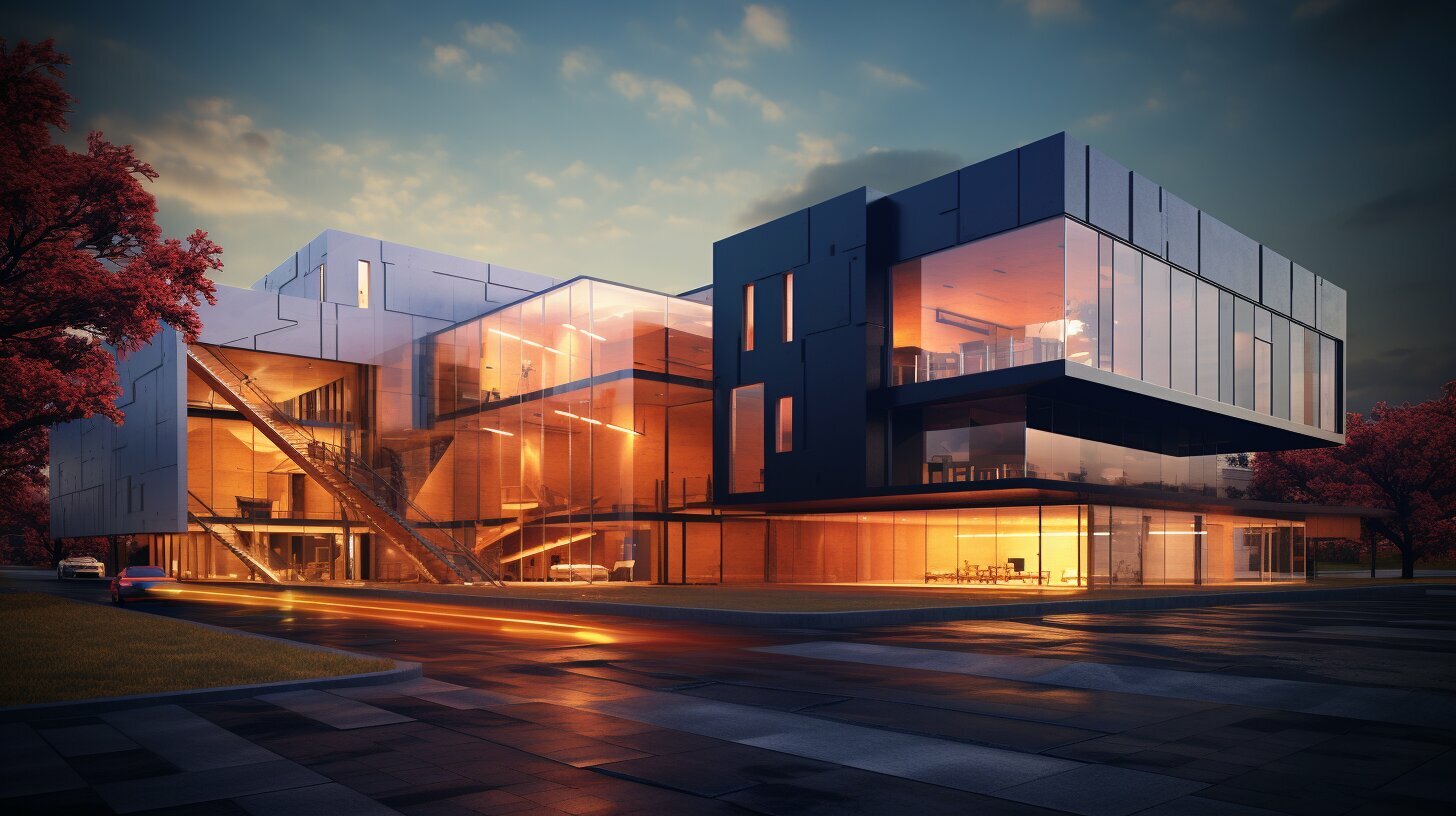As a professional copywriting journalist in the architecture industry, I understand the importance of choosing the right software for any given project. With so many software options available, it can be challenging to determine which one best suits your needs. In this article, I will explore the pros and cons of two popular BIM software options – ArchiCAD and Revit – and provide guidance on choosing the best option for architectural projects in 2024.
BIM software plays a critical role in the design and construction phases of building projects. Not only does it allow architects to create 3D models, but it also helps them to manage project data and collaborate with other team members. Knowing the strengths and weaknesses of different software options can make or break a project.
Key Takeaways
- BIM software is essential in the architecture industry, allowing architects to create models and manage project data.
- ArchiCAD and Revit are two popular BIM software options.
- In this article, we will compare the pros and cons of each software to determine which is the best choice for architectural projects in 2024.
Understanding ArchiCAD and Revit
As a professional architect, I understand the importance of using the right software to bring my designs to life. That’s why I always turn to BIM software. But what is BIM exactly?
BIM stands for Building Information Modeling. It’s a digital approach to building design that allows architects and builders to create and manage a 3D model of a building’s physical and functional characteristics. It’s a powerful tool that enables collaboration and increases efficiency throughout the design and construction process.
Two of the most popular BIM software options in the market are ArchiCAD and Revit. Both are powerful architectural software programs that offer advanced features and capabilities that can help you create complex building designs with ease.
ArchiCAD, developed by Graphisoft, is a BIM software used mostly by architects and building designers. It has a strong focus on 3D modeling and visualization, and its interface is highly intuitive and user-friendly, making it easy for new users to get started.
Revit is another robust BIM software option, developed by Autodesk. It’s used by architects, engineers, and contractors to design, collaborate, and bring their building designs to life. One of Revit’s strengths lies in its ability to integrate with other Autodesk products, such as AutoCAD and 3ds Max.
Comparison of Features
Now, let’s dive into the nitty-gritty and compare the features of ArchiCAD and Revit. As we’ve established, both are BIM software designed for architectural projects. However, they have some differences in terms of functionality, user-friendliness, and integration capabilities.
Design Tools: ArchiCAD is known for its intuitive and user-friendly design tools. It provides a range of parametric elements that allow for easy creation and customization of building components. On the other hand, Revit’s design tools are more advanced, but can be slightly more challenging to learn. However, once mastered, Revit’s design capabilities can lead to more complex and intricate designs.
Compatibility: Both software offer compatibility with a range of file formats, ensuring seamless integration with other platforms. However, ArchiCAD is more limited in terms of compatibility compared to Revit. Revit allows for easy collaboration with engineers, consultants, and other stakeholders, making it a better choice for larger-scale projects.
| Features | ArchiCAD | Revit |
|---|---|---|
| User-Friendliness | Intuitive and easy to learn | Advanced, but can be more challenging to learn |
| Integration | Compatible with a range of file formats, but more limited compared to Revit | Allows for easy collaboration with engineers, consultants, and other stakeholders |
| Parametric Modeling | Provides a range of parametric elements that allow for easy creation and customization of building components | Offers more advanced parametric modeling capabilities, allowing for more complex and intricate designs |
| Rendering | Provides a range of rendering options, but may require additional plug-ins for more advanced rendering capabilities | Offers advanced rendering capabilities, including real-time rendering and cloud rendering options |
| Cost | Relatively affordable, with different pricing options available for different project types and team sizes | Can be expensive, particularly for larger-scale projects and enterprise solutions |
“When choosing between ArchiCAD and Revit, it’s important to consider the unique needs and requirements of your project.” – Me
Parametric Modeling: As mentioned before, both software offer parametric modeling capabilities. However, Revit’s parametric capabilities are more advanced and allow for more complex and detailed designs. ArchiCAD, on the other hand, has a more user-friendly and intuitive parametric modeling system that is easier to learn.
Rendering: Both software offer a range of rendering options. However, Revit’s rendering capabilities are more advanced, with options for real-time rendering, cloud rendering, and more. ArchiCAD may require additional plug-ins for more advanced rendering capabilities.
Cost: As with any software, cost is an important consideration. ArchiCAD is relatively affordable, with different pricing options available for different project types and team sizes. Revit, on the other hand, can be expensive, particularly for larger-scale projects and enterprise solutions. It’s important to weigh the cost against the unique needs and requirements of your project before making a decision.
In Conclusion
Both ArchiCAD and Revit are excellent BIM software options for architectural projects. When choosing between the two, it’s important to consider the unique needs and requirements of your project. ArchiCAD may be a better choice for smaller-scale projects or those with a less experienced team, while Revit may be better suited for larger-scale projects or those with a need for advanced collaboration and integration capabilities. Ultimately, the right choice depends on your individual circumstances.
Pros and Cons of ArchiCAD
As an architectural software, ArchiCAD has some amazing features that can make the process of building design more accessible and efficient. However, it also has its drawbacks that architects should be aware of before diving in headfirst. Here are some of the pros and cons of using ArchiCAD as a BIM software:
| Pros | Cons |
|---|---|
| ArchiCAD has a user-friendly interface that makes it easy to navigate and use. | ArchiCAD can be expensive, so it may not be a feasible option for smaller firms or individual architects. |
| The software has a variety of tools that can simplify the building design process. | ArchiCAD has a limited number of plugins compared to other BIM software, which can make certain tasks more difficult or time-consuming. |
| ArchiCAD allows for collaboration between team members in real-time, increasing productivity and creativity. | The software has a steep learning curve, which can be a challenge for new users who are not familiar with BIM software. |
Personally, I think ArchiCAD is a great option for firms that can afford it and have a team of experienced architects who are familiar with working with BIM software. The user-friendly interface and collaborative features make it a great choice for completing complex architectural projects. However, the cost and learning curve may be deterrents for smaller firms or individual architects who are just starting out.
Pros and Cons of Revit
Ah, Revit. The software that’s often touted as the industry standard for BIM. But is it really all that great? Let’s take a look at the pros and cons of this architectural software.
Pros:
- User-Friendly: One of the biggest advantages of Revit is that it’s easy to use. Whether you’re a seasoned architect or a newbie, the software’s intuitive interface makes it easy to get started.
- Integration: Revit seamlessly integrates with other Autodesk products, making it easy to share data across various software platforms.
- Community Support: With a massive user base, there’s no shortage of support and resources available for Revit users. Whether it’s online forums or YouTube tutorials, you’ll always find someone willing to help.
Cons:
- Cost: Revit is not cheap. In fact, it’s one of the most expensive BIM software options out there.
- Resource-Intensive: To use Revit, you need a powerful computer with high-end specs. This can be a major hindrance for small firms or individual architects who can’t afford top-tier hardware.
- Steep Learning Curve: While Revit is user-friendly, it still has a relatively steep learning curve. It can take weeks or even months to master the software, which can be a time-consuming process for busy architects.
“Revit: the software that’s both loved and loathed by architects around the world.”
So, is Revit the right choice for you? That depends on your needs and budget. While it’s certainly a powerful tool with a lot of community support, the high cost and resource-intensive nature of the software may be a dealbreaker for some. Ultimately, as with any BIM software, it’s important to do your research and choose the option that best fits your needs.
Choosing the Right BIM Software in 2024
As an architect, choosing the right BIM software is crucial to ensuring the success of your building designs. With so many options available, it can be tricky to know which software will best suit your needs. Fortunately, there are some key factors to consider that can help you make an informed decision.
Firstly, take a good look at your project requirements. Consider what features you need from your software, as well as the level of detail required in your designs. Some software options, like ArchiCAD, offer greater flexibility in the design process, while others, such as Revit, may be better suited for large-scale projects that require more complex modeling.
It’s also important to evaluate your team’s expertise in using BIM software. If you have a team with a lot of experience using a particular software, it may be worthwhile sticking with that software for your upcoming project. However, if your team is new to BIM software, it may be worth exploring options with a more user-friendly interface.
Another key consideration is future scalability. Will your chosen BIM software be able to accommodate the growth of your business in the coming years? Make sure you choose a software that can adapt to the evolving needs of your firm, rather than having to invest in a new platform down the line.
When it comes to BIM software, there is no one-size-fits-all solution. Evaluate the unique needs of your firm and project before making a decision. Whether you opt for ArchiCAD or Revit, choosing the right BIM software can help streamline the design process, saving you time and money in the long run.
Conclusion
Well, my dear fellow architects, we have reached the end of our journey comparing two of the most popular BIM software options in 2024: ArchiCAD and Revit. I hope you found this article as enlightening as I did while writing it.
As we discussed, both software options have their strengths and weaknesses. ArchiCAD is known for its ease of use and compatibility with other platforms, while Revit stands out for its powerful integration capabilities and robust community support.
So, which one should you choose for your next architectural project? Frankly, it depends on your specific project requirements, team expertise, and future scalability needs. There is no one-size-fits-all answer.
However, if I had to offer my two cents, I would say that both ArchiCAD and Revit are solid choices for building design. It ultimately comes down to personal preferences and priorities.
Ultimately, the most important thing is to choose a BIM software that suits your needs and helps you bring your architectural visions to life. Whether you go with ArchiCAD or Revit, I wish you the best of luck and a prosperous future in the world of architectural software.
FAQ
Q: Can I use ArchiCAD and Revit interchangeably?
A: While ArchiCAD and Revit are both BIM software options, they have different file formats and structures. It is not recommended to switch between them as it may cause compatibility issues.
Q: Are ArchiCAD and Revit suitable for small architectural firms?
A: Both ArchiCAD and Revit can be used by small architectural firms. ArchiCAD offers a user-friendly interface, while Revit provides robust collaborative capabilities. The choice depends on specific project requirements and firm preferences.
Q: Which software is more widely used in the architectural industry?
A: Both ArchiCAD and Revit are widely used in the architectural industry. However, Revit has gained more popularity in recent years due to its integration with other Autodesk software and extensive community support.
Q: Can I import and export files between ArchiCAD and Revit?
A: It is possible to import and export files between ArchiCAD and Revit using different file formats such as IFC or DWG. However, it is recommended to thoroughly check the compatibility and ensure that all elements are accurately transferred.
Q: Do ArchiCAD and Revit require extensive training?
A: Both ArchiCAD and Revit require some level of training to fully utilize their capabilities. However, ArchiCAD is often considered more user-friendly for beginners with its intuitive interface, while Revit may have a steeper learning curve but offers more advanced features.
Q: Can I use ArchiCAD or Revit for interior design projects?
A: ArchiCAD and Revit can be used for interior design projects. ArchiCAD offers specialized tools for interior design, while Revit provides comprehensive building information modeling capabilities that can be applied to interior spaces as well.

![The 10 Most Accurate Website Traffic Estimators [2025 Update] - Accurate Website Traffic Estimators The 10 Most Accurate Website Traffic Estimators [2025 Update] - Accurate Website Traffic Estimators](https://www.toptut.com/wp-content/uploads/2024/01/The-10-Most-Accurate-Website-Traffic-Estimators-2024-Update.jpg)





![Top 15 AI Video Annotation Tools in 2024 [Free & Paid] - Accurate Website Traffic Estimators AI Video Annotation Tools](https://www.toptut.com/wp-content/uploads/2023/10/AI-Video-Annotation-Tools.jpg)

Comments 1
Comments are closed.